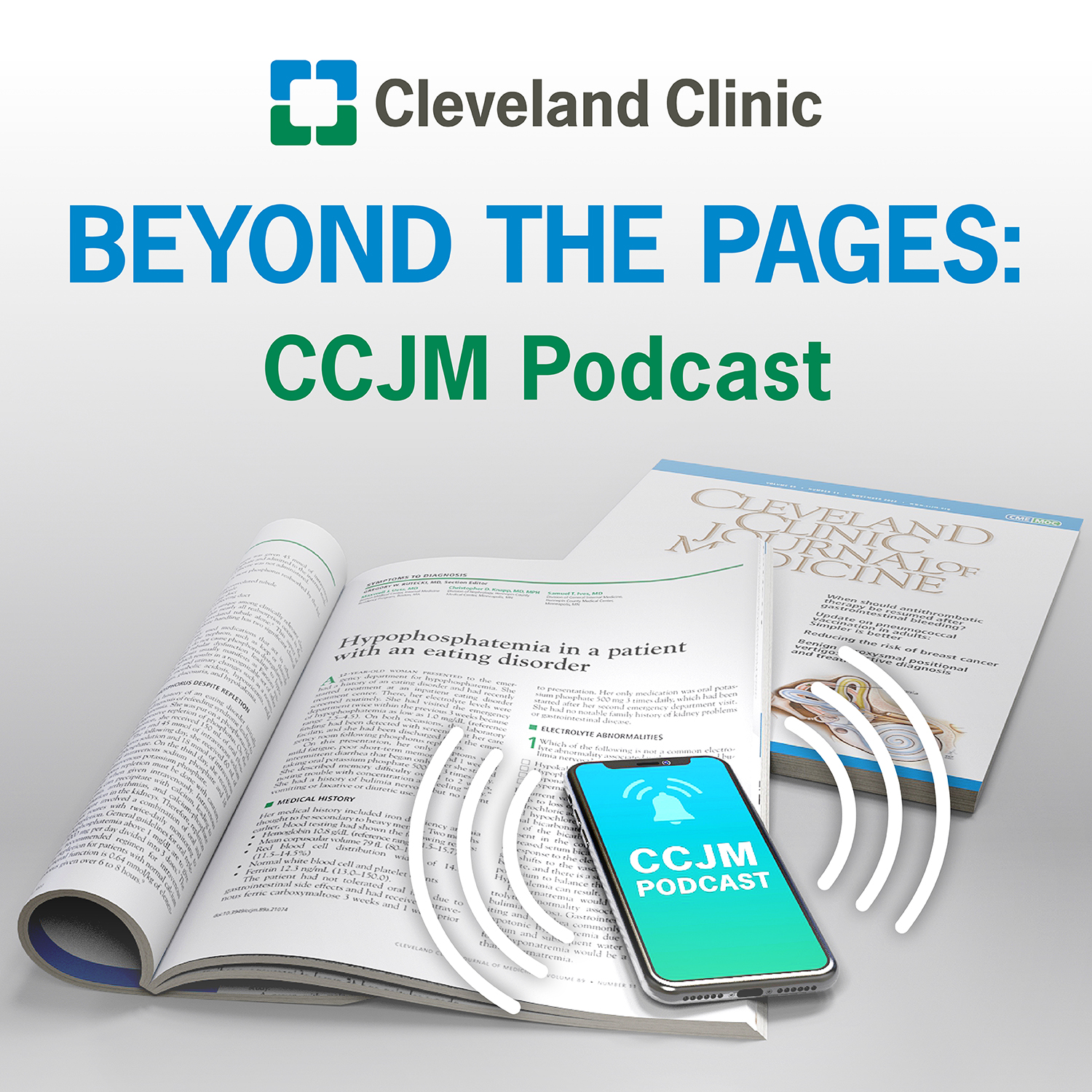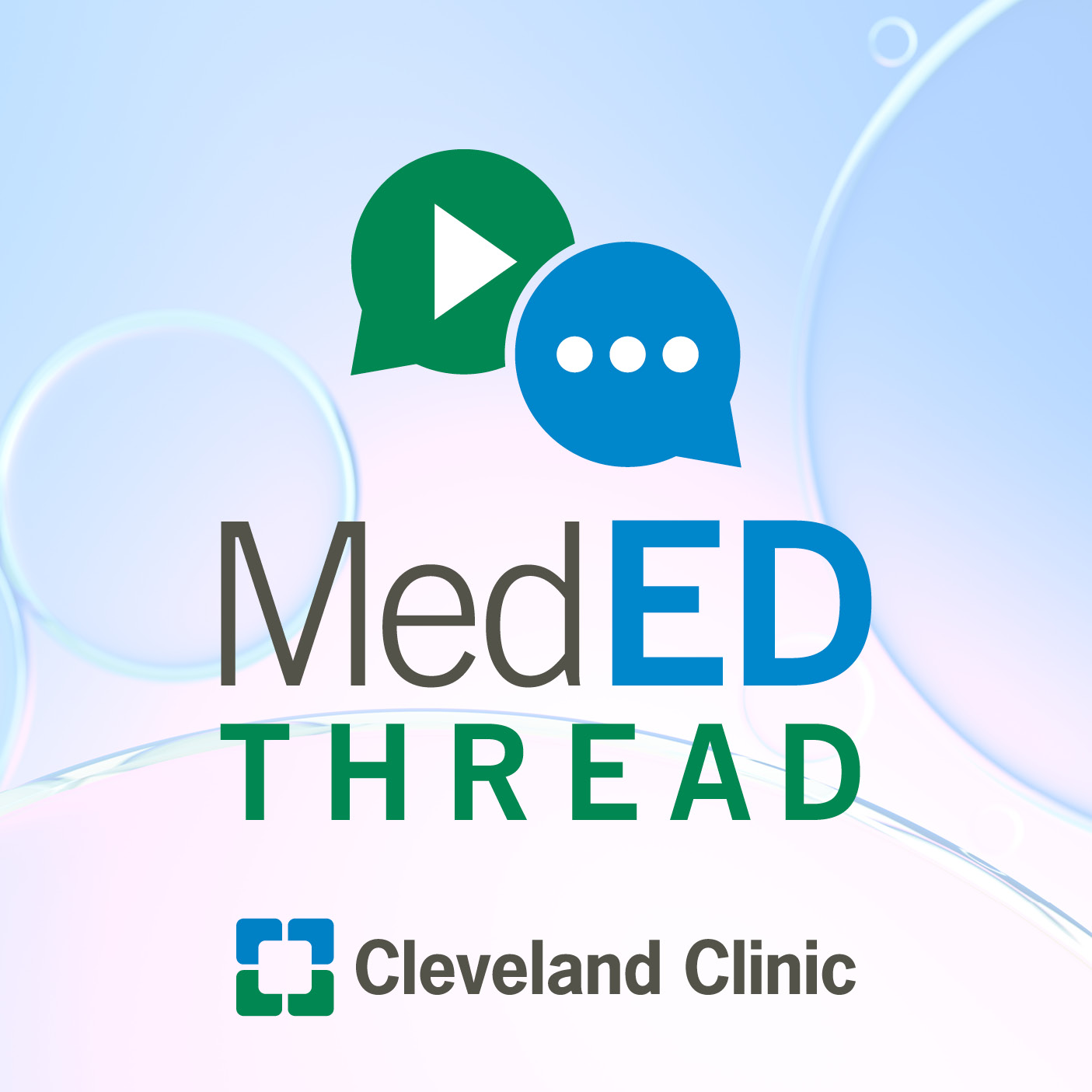Cardiovascular Disease and Cancer: The Conjoined Twins

Dr. Mougil talks about how cardiovascular disease and cancer are two interlinked entities and how one affects the other. Moderated by Zoha Majeed, MD.
Subscribe: Apple Podcasts | Podcast Addict | Buzzsprout | Spotify
Cardiovascular Disease and Cancer: The Conjoined Twins
Podcast Transcript
Today, we have a wonderful episode planned. We are honored to have with us, Dr. Zoha Majeed, a rising star in the field of cardiology and PGY-1 in the Internal Medicine Residency at Cleveland Clinic.
With her today is our faculty expert none other than our esteemed colleague in medical education and the world’s expert in Cardiology-oncology, Dr. Rohit Moudgil. Dr. Moudgil is a beloved member of our teaching faculty in the Medicine program currently serving as an APD, while also serving as senior staff in the Department of Cardiology within the HVTI at Cleveland Clinic. He also holds the appointment of Associate professor at Cleveland Clinic Lerner College of Medicine within CWRU.
Thank you both for working on today’s show.
To our honored guests, please take a moment to say hi, tell us about yourselves, and start right in on the questions.
Today we’re going to talk about how cardiovascular disease and cancer are two interlinked entities and how one affects the other.
Question 1: Can you tell us a little bit about how these two entities are linked?
CVD and Cancer are the two most common causes of morbidity and mortality worldwide. Not only do they co-exist in many patients but the presence of one can affect the other.
Question 2: Do CVD and Cancer share any common risk factors?
The role of Inflammation is an important prognostic factor in the development of both CVD and Cancer, along with HTN, smoking, obesity, and insulin resistance. The pathophysiology of these risk factors converges at the cellular level where they cause oxidative damage and increase the risk of development of both CVD and Cancer.
Question 3: How should our approach to CVD in cancer patients change and what do you think are the current barriers to that?
A diagnosis of cancer is life-altering which often shifts the attention away from cardiovascular health promotion. Cancer patients represent a vulnerable population with an elevated risk of cardiovascular disease given the inherent properties of the risk factors that are shared among both conditions. Cardiovascular disease and mortality were shown to be greater in cancer survivors compared to age-matched controls which makes it all the more imperative that we implement a MDT approach to screen cancer patients for cardiovascular disease. Emphasis on primary prevention and strategies to improve it.
Question 4: How can we screen these patients?
Emphasis on primary prevention and strategies to improve it. Early referrals to cardiologists when the diagnosis of cancer is made, particularly if we anticipate the use of potentially cardio-toxic chemotherapies.
Question 5: Many cancer therapies have cardiotoxic side effects which may limit the duration and efficacy of these treatments. How can we optimize cancer patients from a cardiovascular perspective?
On the management front, cardiovascular medications may be used as potential adjuvant therapies to standard anticancer treatments that could improve anti-tumor response and effectiveness. Although further studies are needed, repurposing cardiovascular therapies for non-cardiovascular indications and extending these interventions to cancer patients could be a promising therapeutic opportunity for patients with different stages of cancer who may not respond to standard cancer therapy or even lack an effective treatment.
Question 6: Can you give us some examples of repurposing cardiovascular therapies for cancer patients?
The evidence of the use of aspirin and its mitigating effect on colorectal cancer morbidity and mortality has been identified.
Question 7: We know that inflammation plays an important role in the pathogenesis of both cancer and cardiovascular disease, can you tell us how we can utilize that knowledge to optimize patient care?
RAAS system inhibitors are linked to a reduction in pro-inflammatory pathways (Candesartan and Captopril for lung CA)
Chemoprotective effects of BBs against some cancers (prostate) for HTH, IHD, and CHF.
The role of T-type calcium channels in cellular proliferation has been described in breast, brain, colorectal, gastric, ovarian, and prostate tumors as well as leukemia.
Question 8: Recently there has been a big push for diabetes management in cardiovascular disease,
do you think this will benefit cancer patients as well?
Insulin resistance is a pro-inflammatory state, a pathophysiology similar to that of the development of cancers. Role of statins, PCSK9is, and exercise in reducing the risk of/tackling insulin resistance/T2DM.
Question 9: So when we see patients in the clinic or in the hospital who have a current or previous cancer diagnosis, what is the best way to approach their cardiac health?
Primary prevention of cardiac disease should be at the forefront
Early referral to a cardiologist
Repurposing cardiovascular therapies for non-cardiovascular indications and extending these interventions to cancer patients could be a promising therapeutic opportunity for patients with different stages of cancer who may not respond to standard cancer therapy or even lack an effective treatment.

The Medicine Grand Rounders
A Cleveland Clinic podcast for medical professionals exploring important and high impact clinical questions related to the practice of general medicine. You'll hear from world class clinical experts in a variety of specialties of Internal Medicine.
Meet the team: Dr. Andrei Brateanu, Dr. Nitu Kataria, Dr. Arjun Chatterjee, Dr. Zoha Majeed, Dr. Sharon Lee, Dr. Ridhima Kaul
Former members: Dr. Richard Wardrop, Dr. Tarek Souaid
Music credits: Dr. Frank Gomez

